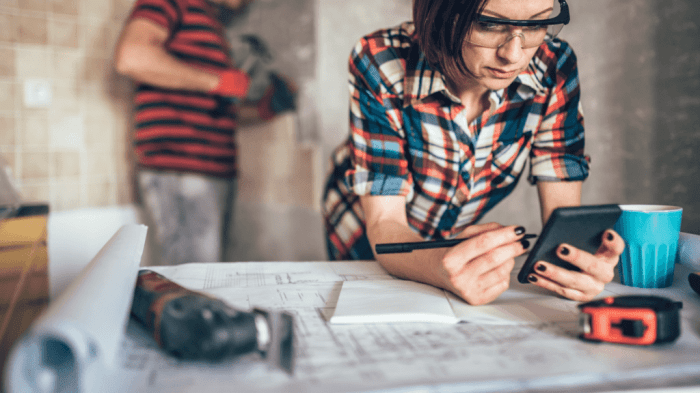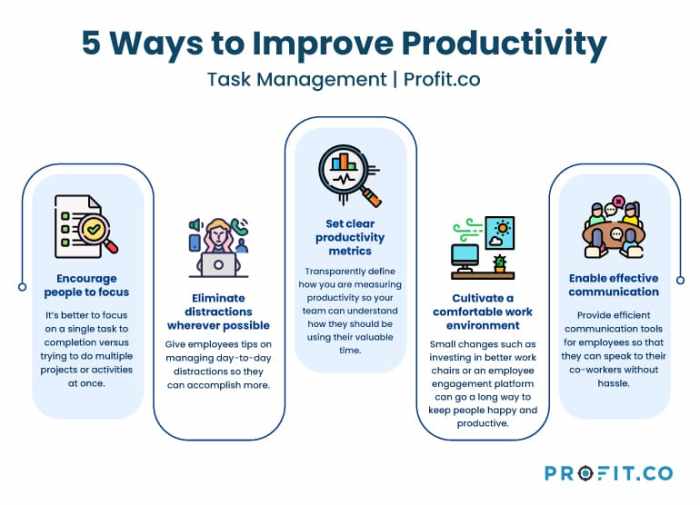
Stepping into homeownership is an exciting adventure, but it also comes with the responsibility of maintaining and improving your property. For first-time homeowners, navigating the world of home improvement can feel overwhelming, especially when trying to balance affordability with desired upgrades. This guide provides valuable tips and strategies for making smart home improvement choices that won’t break the bank, allowing you to create a comfortable and stylish home that reflects your unique style.
From budgeting and planning to DIY techniques and utilizing resources, we’ll cover essential aspects of home improvement, empowering you to make informed decisions and tackle projects with confidence. Whether you’re dreaming of a modern kitchen, a cozy backyard oasis, or simply want to increase your home’s value, this guide will provide practical advice and inspiration for transforming your house into a home you love.
Budgeting and Planning

Home improvement projects can significantly enhance your living space and increase your home’s value, but it’s crucial to approach them strategically. A well-defined budget and a plan for prioritizing projects are essential for successful and affordable home improvements.
Creating a Realistic Budget
A realistic budget is the foundation for any successful home improvement project. Here’s how to create one:
- Determine Your Financial Situation: Start by assessing your current financial situation. Consider your income, savings, and existing debt. This will help you understand how much you can realistically allocate to home improvements.
- Prioritize Projects: Rank your desired projects based on their impact and urgency. Focus on projects that provide the most value for your investment and address any immediate needs, such as safety concerns or energy efficiency improvements.
- Gather Quotes and Research Costs: Obtain quotes from multiple contractors for the projects you’re considering. Research material costs and factor in permits, inspections, and potential unexpected expenses.
- Allocate Funds for Contingencies: It’s always wise to allocate a portion of your budget for unforeseen costs. This buffer can help you stay on track even if you encounter unexpected challenges during the project.
Prioritizing Projects
Once you have a budget in place, prioritize projects based on their impact and return on investment. Here are some factors to consider:
- Impact on Home Value: Projects that enhance curb appeal, increase living space, or improve energy efficiency generally have a higher return on investment. For example, a new roof, a well-maintained exterior, or energy-efficient windows can significantly increase your home’s value.
- Safety and Functionality: Addressing safety hazards, such as outdated wiring or a leaky roof, is crucial. Similarly, projects that improve functionality, like updating a kitchen or bathroom, can significantly enhance your daily life.
- Personal Preferences: While considering the financial aspects is important, don’t neglect your personal preferences. Choose projects that align with your lifestyle and make your home a place you truly enjoy.
Affordable DIY Projects
Many home improvement projects can be tackled with DIY skills, saving you significant costs. Here are some examples:
- Painting: A fresh coat of paint can transform a room, making it feel new and inviting. Painting walls, trim, and doors is a relatively simple project that can be done with basic tools and materials.
- Landscaping: Curb appeal plays a significant role in home value. Simple landscaping projects, such as planting flowers, shrubs, or trees, can significantly enhance your home’s exterior.
- Updating Hardware: Replacing outdated doorknobs, cabinet pulls, or light fixtures can instantly refresh a room. These small changes can make a big impact without breaking the bank.
Essential Upgrades for First-Time Homeowners
As a first-time homeowner, you’re probably eager to make your house feel like a home. While it’s tempting to dive into every home improvement project imaginable, it’s important to prioritize those that will provide the most value for your investment. Consider these essential upgrades that can significantly enhance your living experience and boost your home’s resale value.
Increasing Resale Value
The right home improvements can significantly increase your home’s resale value. These projects appeal to a broad range of buyers and can make your home stand out in a competitive market.
- Kitchen Remodeling: The kitchen is often considered the heart of the home, and updating it can dramatically increase resale value. Focus on upgrading appliances, countertops, cabinets, and flooring.
- Bathroom Remodeling: Similar to kitchens, updated bathrooms are highly sought after. Replacing outdated fixtures, updating the shower or tub, and modernizing the vanity can significantly increase appeal.
- Adding a Deck or Patio: Outdoor living spaces are increasingly popular, and adding a deck or patio can make your home more attractive to buyers. Choose materials that are durable and low-maintenance, and consider incorporating features like a fire pit or outdoor kitchen.
- Finishing a Basement: A finished basement provides additional living space, which is highly valuable to buyers. Consider adding a family room, home office, or guest bedroom.
Improving Energy Efficiency
Investing in energy-efficient upgrades can save you money on your utility bills and make your home more comfortable. These improvements also contribute to a greener environment and can increase your home’s resale value.
- Insulation: Adding insulation to your attic, walls, and crawl space can significantly reduce heat loss in the winter and heat gain in the summer. This can lead to lower heating and cooling costs and a more comfortable living environment.
- Window Replacement: Replacing old, drafty windows with energy-efficient ones can make a big difference in your home’s energy efficiency. Look for windows with a high energy star rating, which indicates they meet specific energy performance standards.
Enhancing Curb Appeal
First impressions matter, and a well-maintained exterior can make a big difference in your home’s appeal. These cost-effective improvements can help your home stand out from the crowd.
- Landscaping: A well-designed landscape can add curb appeal and increase your home’s value. Consider adding a few mature trees, colorful flower beds, or a decorative walkway.
- Painting: A fresh coat of paint can make a world of difference in the appearance of your home. Choose neutral colors that appeal to a wide range of buyers, and consider painting your front door a bold color to create a welcoming focal point.
- Power Washing: Power washing your home’s exterior can remove dirt, grime, and mildew, giving it a clean and fresh look.
DIY Techniques for Saving Money
Tackling basic home improvement projects yourself can significantly reduce costs and provide a sense of accomplishment. Learning some fundamental DIY skills can save you money in the long run and empower you to maintain your home efficiently.
Basic DIY Skills for First-Time Homeowners
Having a basic understanding of common DIY techniques can equip you to handle simple repairs and upgrades around your home. These skills can be learned through online tutorials, books, and even hands-on workshops.
- Painting: This is a fundamental skill that can refresh the look of your home. Learn the proper techniques for prepping surfaces, choosing the right paint, and applying it smoothly.
- Plumbing: Basic plumbing skills, like fixing leaky faucets, unclogging drains, and replacing showerheads, are essential for any homeowner.
- Electrical: While electrical work can be dangerous, learning how to change light fixtures, install switches, and replace outlets can save you money on electrician fees.
- Carpentry: Basic carpentry skills, such as hanging shelves, installing trim, and repairing minor damage, can be useful for various home improvement projects.
Using Simple Tools and Techniques
Learning how to use common tools effectively is crucial for DIY projects.
- Measuring Tools: A tape measure, level, and stud finder are essential for accurate measurements and ensuring that your projects are straight and secure.
- Power Tools: A drill, screwdriver, and saw are versatile tools that can handle a wide range of tasks.
- Hand Tools: A hammer, screwdriver, pliers, and wrench are essential for basic repairs and assembly.
Finding Affordable Materials
Researching and sourcing materials at affordable prices is a key aspect of saving money on DIY projects.
- Online Retailers: Websites like Amazon, Home Depot, and Lowe’s often offer competitive prices and a wide selection of materials.
- Local Hardware Stores: Visiting local hardware stores can allow you to get personalized advice and may offer discounts or promotions.
- Reusing and Recycling: Consider repurposing existing materials or finding salvaged items to reduce costs and minimize waste.
- Thrift Stores and Salvage Yards: These places can be treasure troves for affordable building materials and unique finds for your home.
Utilizing Resources and Support
Navigating home improvement projects can be overwhelming for first-time homeowners. Fortunately, numerous resources and support systems can help you save money, ensure quality work, and avoid common pitfalls.
Community Resources and Workshops
Many communities offer valuable resources for homeowners, including workshops and classes. These programs can provide practical knowledge and skills on various home improvement topics, from basic plumbing and electrical work to landscaping and energy efficiency.
- Local Community Centers: Contact your local community center or recreation department to inquire about workshops, classes, and seminars related to home improvement. These programs are often offered at affordable rates or even free of charge.
- Home Improvement Stores: Large home improvement retailers frequently host workshops and demonstrations led by experienced professionals. These events provide hands-on experience and valuable tips for specific projects.
- Local Libraries: Libraries often offer free resources, including books, magazines, and online databases, with information on home improvement projects, building codes, and DIY techniques.
Finding Reputable Contractors and Negotiating Fair Prices
Hiring contractors for complex home improvement projects can be a significant investment. It is crucial to find reputable professionals who can deliver quality work within your budget.
- Seek Recommendations: Ask friends, family, neighbors, and colleagues for recommendations for reliable contractors they have worked with in the past.
- Online Reviews and Ratings: Check online platforms like Angie’s List, HomeAdvisor, and Yelp for reviews and ratings of local contractors. Look for contractors with consistently positive feedback and a history of satisfied customers.
- Licensing and Insurance: Ensure that the contractors you consider are properly licensed and insured. This protects you from potential liabilities and ensures that the contractor meets industry standards.
- Obtain Multiple Quotes: Get quotes from at least three different contractors before making a decision. Compare their pricing, experience, and proposed timelines.
- Negotiate Fair Prices: Don’t be afraid to negotiate with contractors to reach a price that works for you. Be prepared to discuss your budget and any potential cost savings you can offer, such as providing materials or completing some tasks yourself.
Researching and Applying for Home Improvement Grants and Loans
Government agencies and non-profit organizations offer grants and loans to help homeowners finance home improvement projects, especially energy-efficient upgrades.
- Energy Efficiency Grants: Explore government programs like the Energy Efficiency Tax Credit and state-level grants that provide financial assistance for energy-saving improvements, such as insulation, windows, and solar panels.
- Home Improvement Loans: Investigate home improvement loans offered by banks, credit unions, and online lenders. These loans can provide flexible financing options with varying interest rates and repayment terms.
- Non-Profit Organizations: Some non-profit organizations offer grants and loan programs to low-income homeowners for essential home repairs and upgrades.
- Local Housing Authorities: Contact your local housing authority to inquire about potential grant programs or assistance for home improvements.
Home Improvement Straw

A home improvement straw is a financial tool that allows homeowners to access funds for home improvement projects without taking out a traditional loan. It is essentially a line of credit that can be used for a variety of projects, from small repairs to major renovations.
Types of Home Improvement Straws
There are a few different types of home improvement straws available, each with its own set of terms and conditions.
- Home Equity Line of Credit (HELOC): This is a revolving line of credit that is secured by your home’s equity. You can borrow up to a certain percentage of your home’s value, and you only pay interest on the amount you borrow. HELOCs typically have variable interest rates, which can fluctuate over time.
- Home Equity Loan: This is a fixed-rate loan that is also secured by your home’s equity. You receive a lump sum of money upfront, and you make fixed monthly payments for a set period of time. Home equity loans typically have lower interest rates than HELOCs, but they can be more expensive overall if you don’t pay them off quickly.
- Cash-Out Refinance: This is a type of mortgage refinance that allows you to borrow more money than you owe on your current mortgage. The extra money can be used for home improvements. Cash-out refinances typically have lower interest rates than home equity loans, but they can also come with higher closing costs.
Using a Home Improvement Straw
A home improvement straw can be used for a variety of projects, such as:
- Kitchen and bathroom renovations: This can include upgrading appliances, cabinets, countertops, and flooring.
- Adding a room or extension: This can increase the living space of your home and add value.
- Landscaping and outdoor improvements: This can include building a deck, patio, or swimming pool.
- Energy efficiency upgrades: This can include installing solar panels, new windows, or insulation.
Benefits of Using a Home Improvement Straw
There are several benefits to using a home improvement straw, including:
- Lower interest rates: Home improvement straws typically have lower interest rates than credit cards, which can save you money over time.
- Flexible repayment options: You can choose a repayment plan that fits your budget, and you can often make extra payments to pay off the loan faster.
- Tax deductions: Some home improvements may qualify for tax deductions, which can further reduce your overall costs.
Embarking on home improvement as a first-time homeowner can be a rewarding journey. By embracing the principles of budgeting, prioritizing, and utilizing resources, you can create a beautiful and functional home that reflects your personal style and enhances your overall living experience. Remember, it’s not about completing every project at once, but rather about making gradual improvements that enhance your home’s value and create a space you truly cherish.
With a little planning, creativity, and a willingness to learn, you can transform your house into a home that feels both comfortable and inspiring.
Expert Answers
What are some essential tools every first-time homeowner should have?
A basic toolkit should include a hammer, screwdriver set, measuring tape, level, pliers, utility knife, and a drill. These tools will be useful for a variety of common repairs and upgrades.
How can I find reputable contractors for larger projects?
Ask for recommendations from friends, family, or neighbors. Check online reviews and ratings on platforms like Angie’s List or HomeAdvisor. Get multiple quotes and compare bids before making a decision.
Are there any tax benefits for home improvements?
Yes, certain home improvements may qualify for tax deductions or credits. Consult with a tax professional to determine eligibility for specific projects.
Where can I find inspiration for home improvement projects?
Browse home improvement magazines, websites, and social media platforms like Pinterest and Instagram for ideas and inspiration. Visit home improvement stores and attend local home shows to see the latest trends and products.




